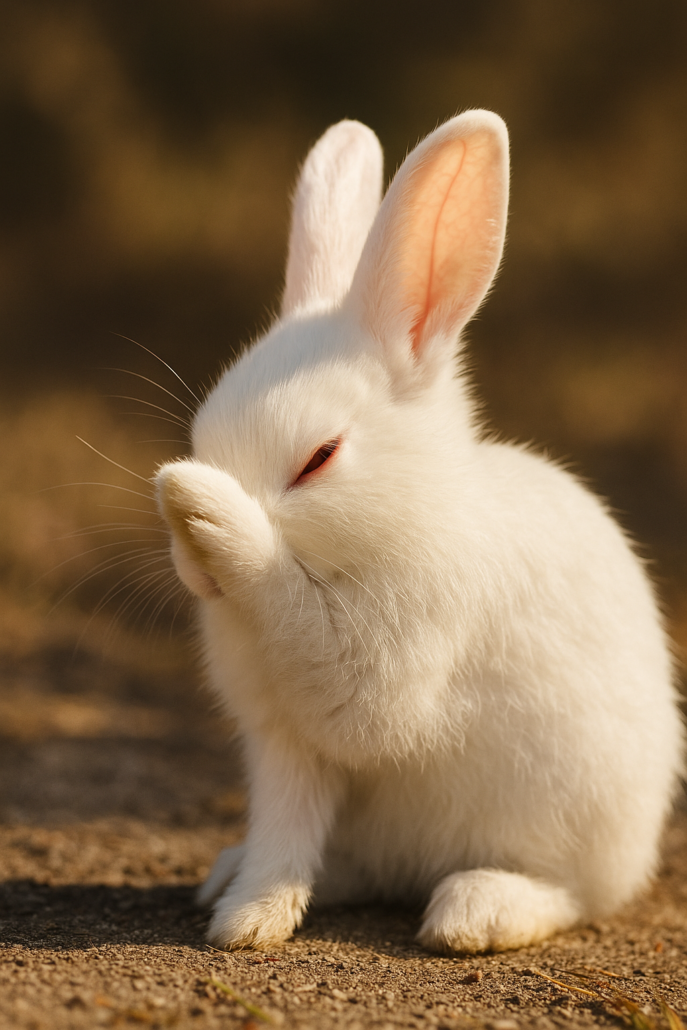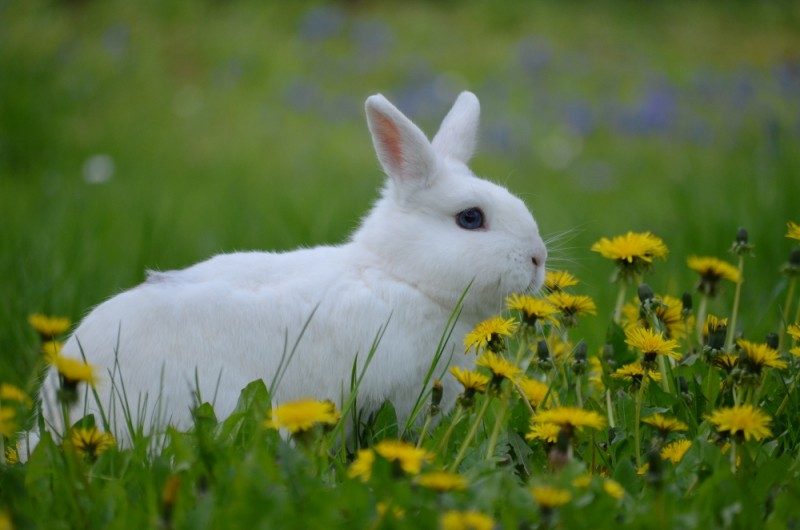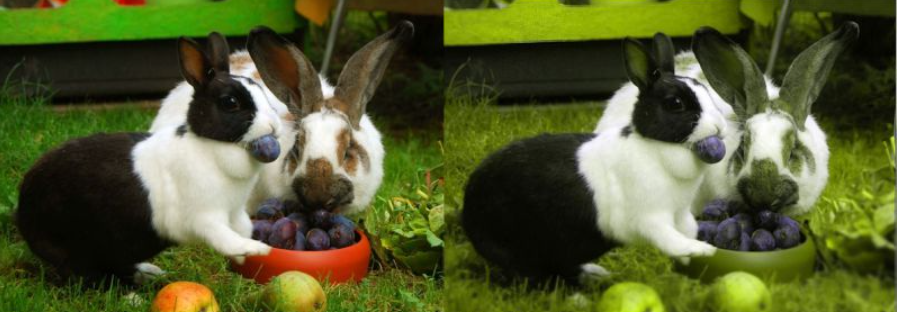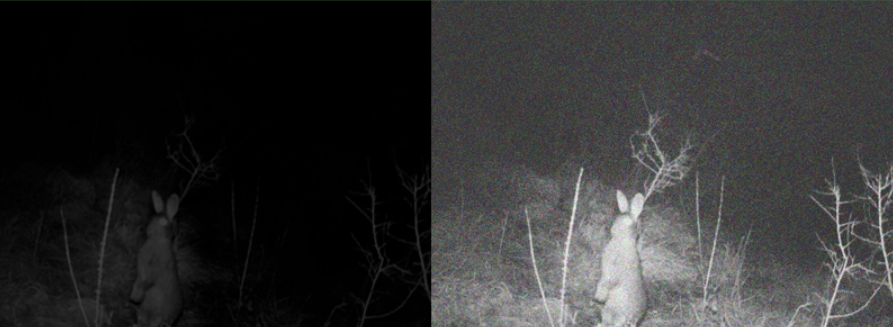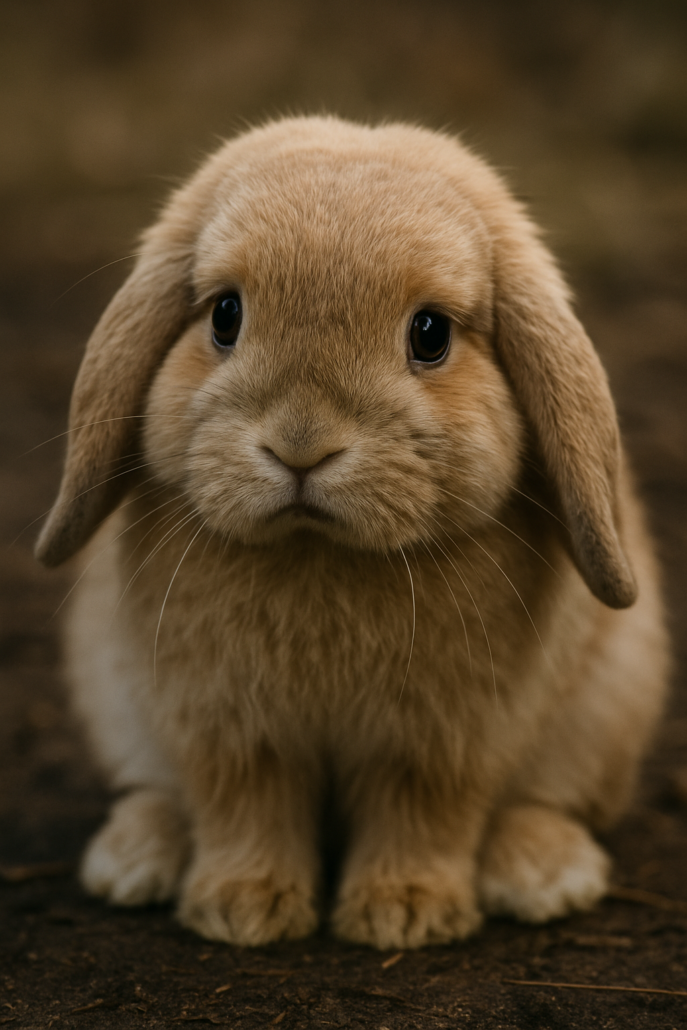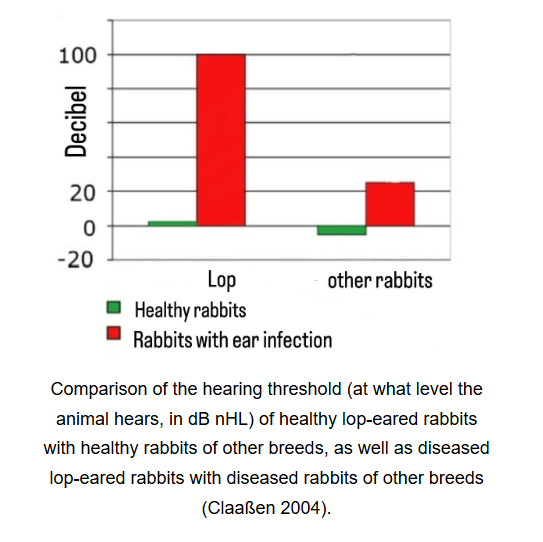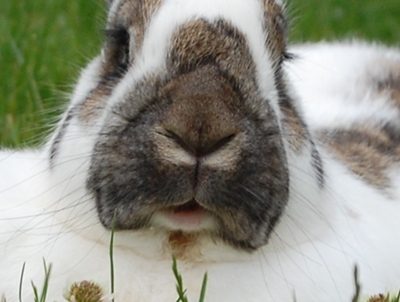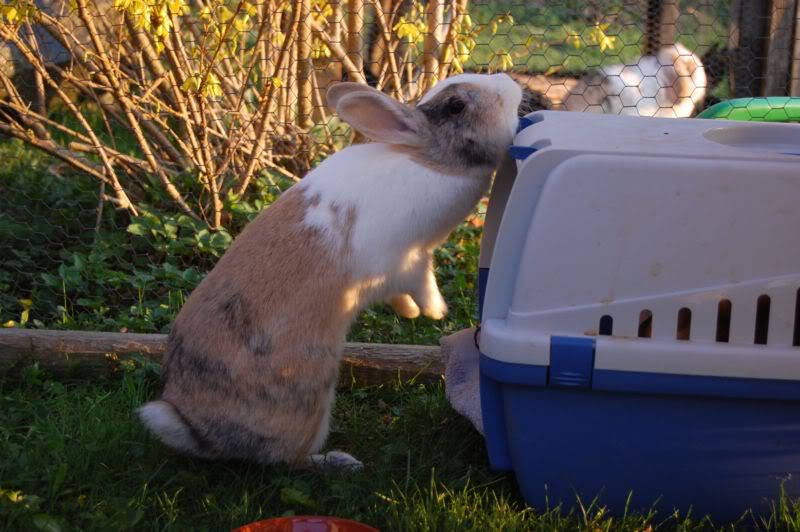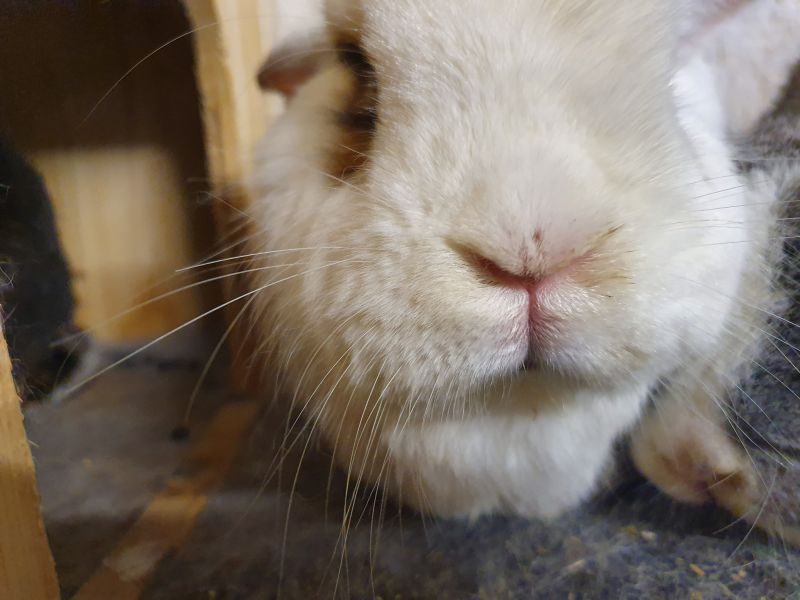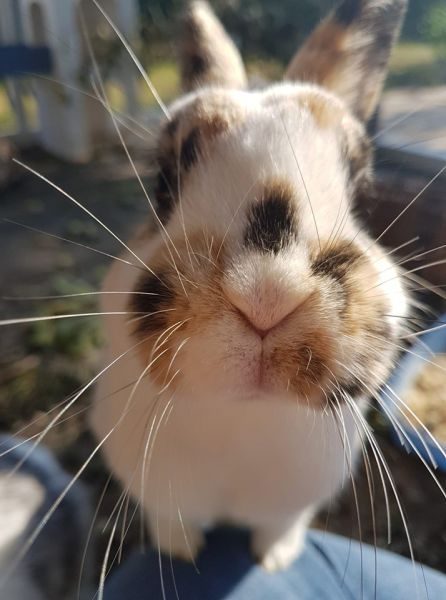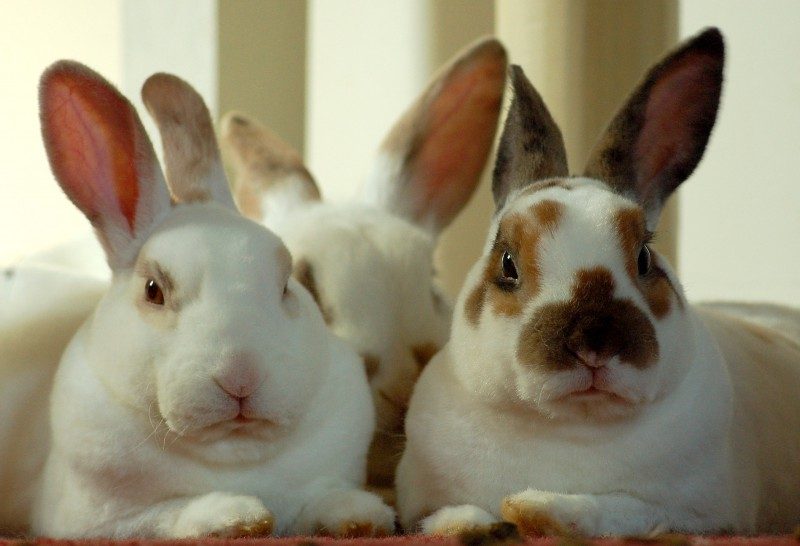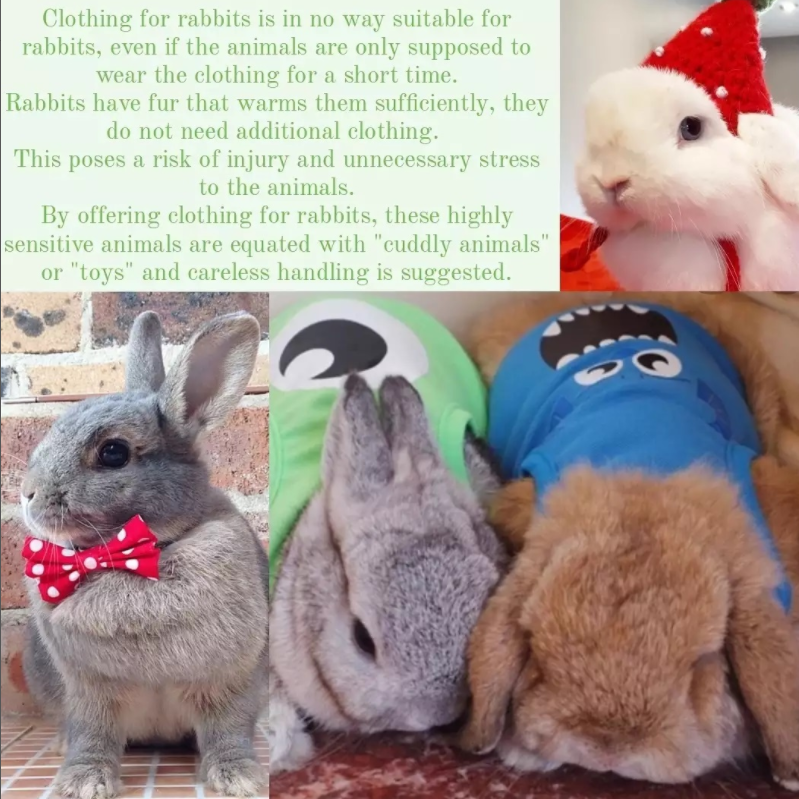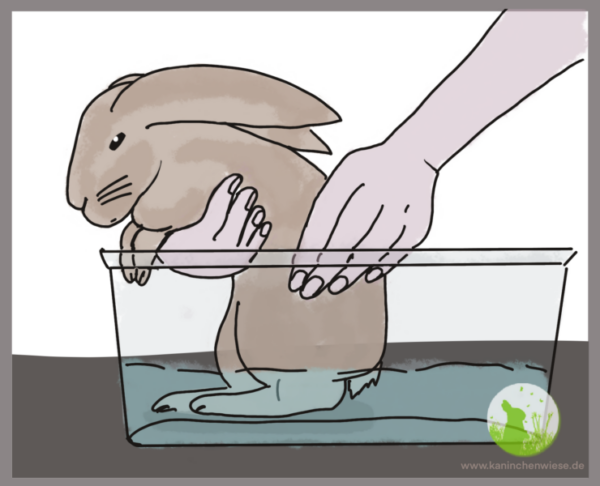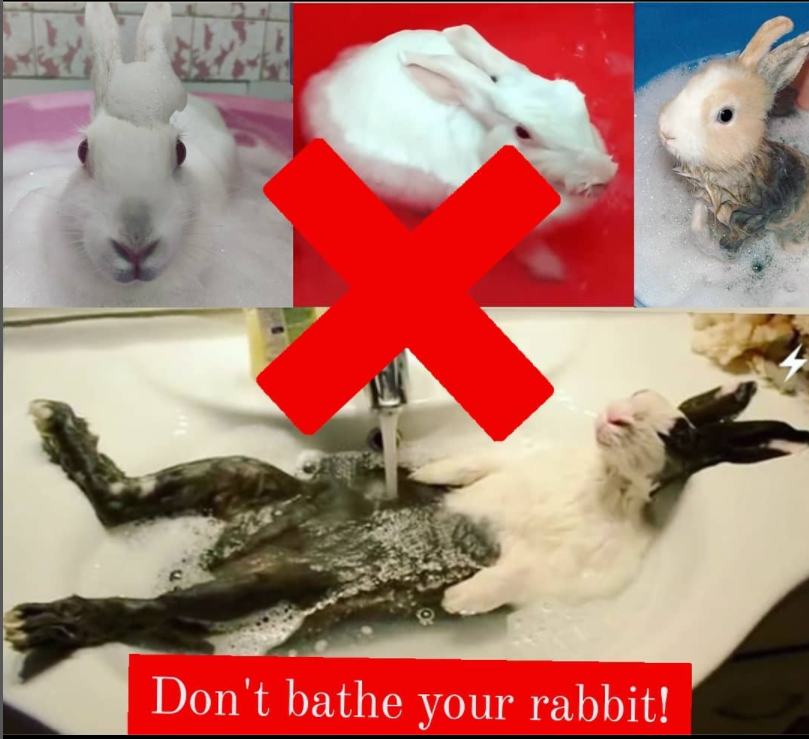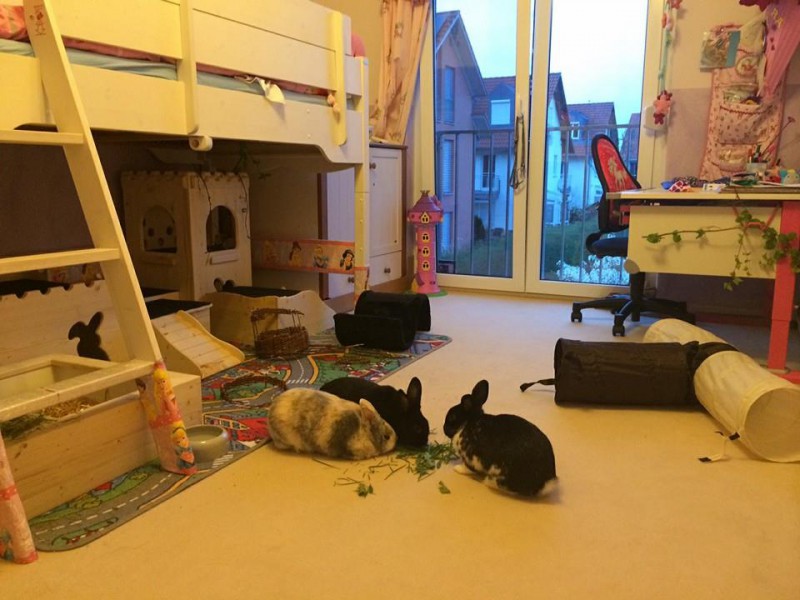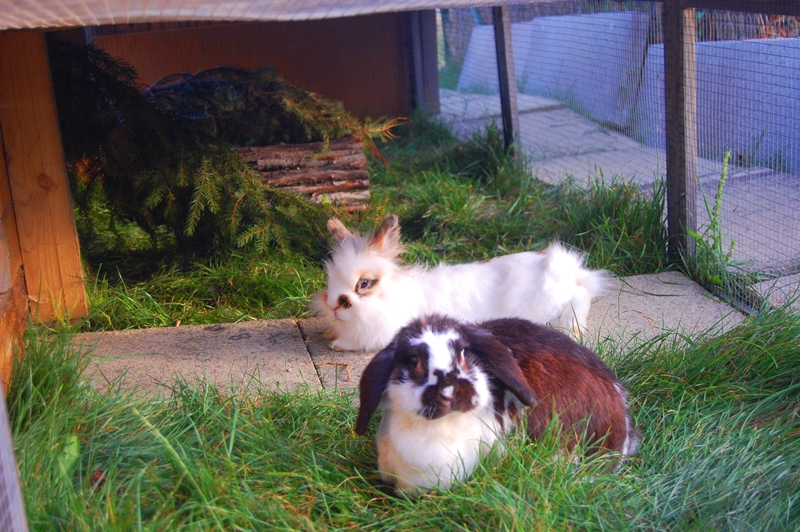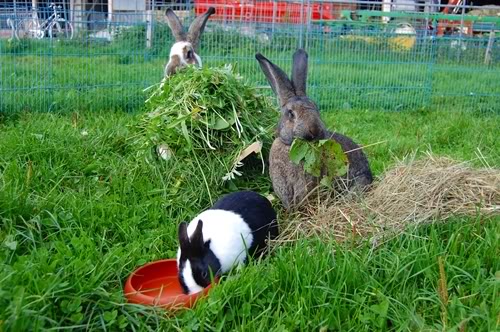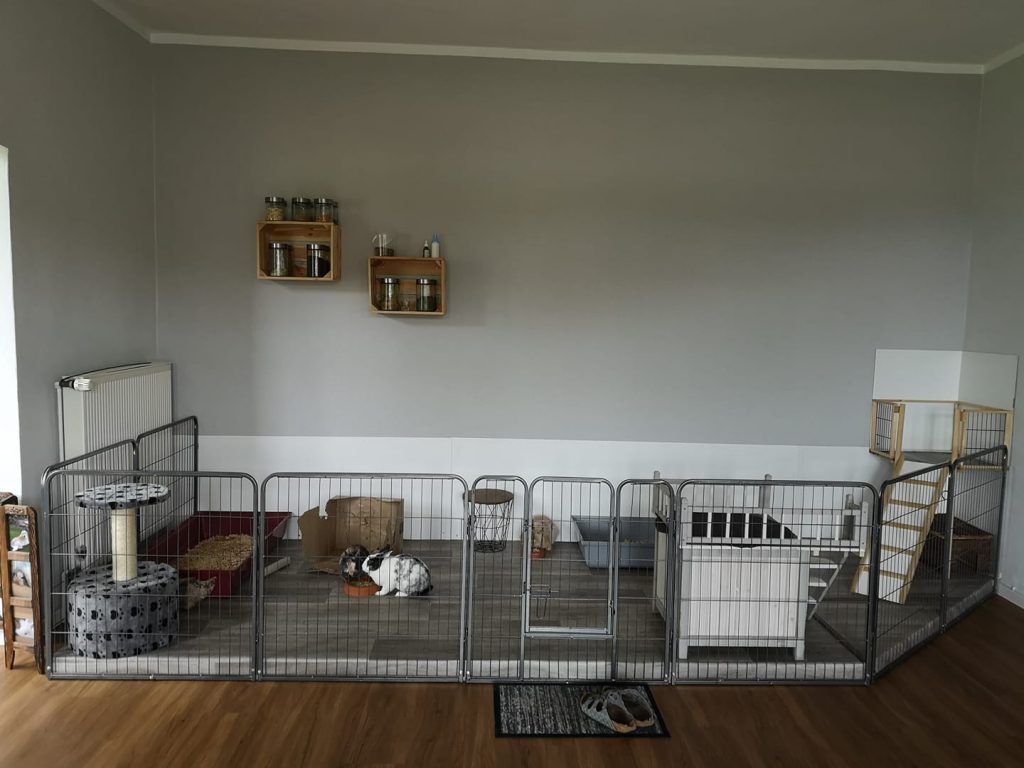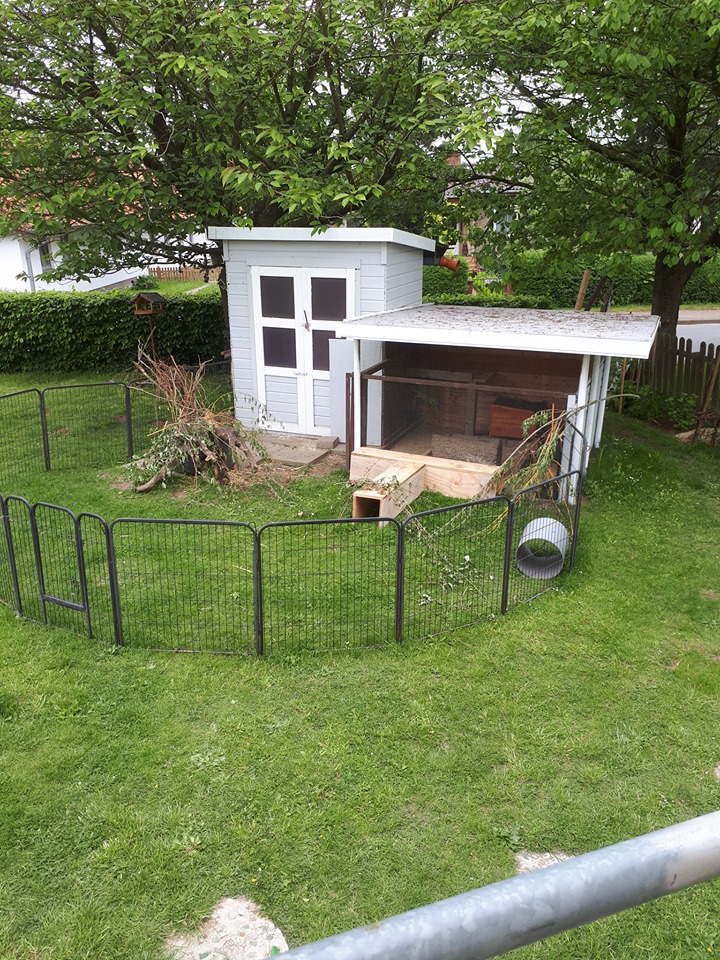This is how you create the perfect enclosure for disabled and elderly rabbits.
Contents
- Enclosures for Rabbits with Disabilities – Tips for a Needs-Based Design
- The Right Flooring for Paralyzed or Bedridden Rabbits
- Soft Base Layer
- Absorbent Underlayer
- Waterproof or Urine-Repellent Top Layer
- Rabbits in Wheelchairs?
- Tips for Designing Rest Areas
- Adapting Feeding and Drinking Areas
- Special Needs of Rabbits with Balance Problems (e.g., Caused by Encephalitozoon cuniculi – EC)
- Special requirements for blind rabbits
- Housing adaptations for rabbits with an amputated limb
- Entertainment and encouraging the rabbit to move more
- Safety and risk prevention
Enclosures for Rabbits with Disabilities – Tips for a Needs-Based Design
Rabbits with disabilities — meaning those with physical limitations such as paralysis, blindness, amputations, or age-related issues — require special consideration when designing their enclosure. A properly adapted environment can make a decisive difference in ensuring that, despite their disabilities, these animals enjoy a safe, fulfilling life that respects their natural behavior.
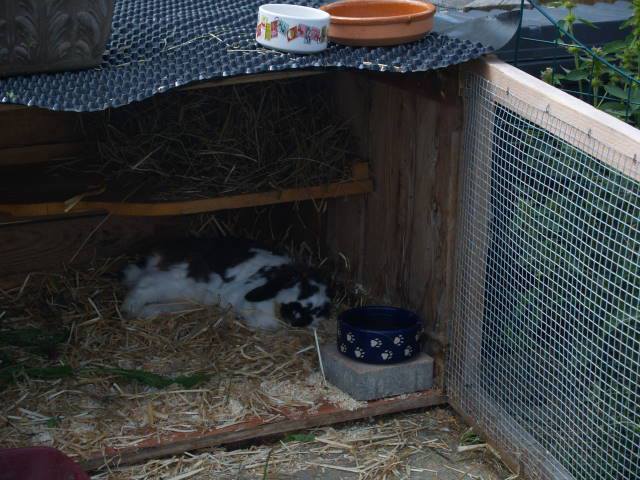
Mobility Impairments: Designing an Adapted Enclosure
A well-designed enclosure allows a disabled rabbit to move around independently and safely, without constantly relying on the caregiver’s help. The following measures are especially important to achieve this:
Floor Design
A soft, non-slip floor is essential, as rabbits with disabilities may struggle to walk or jump. Carpets help prevent slipping and injuries. Blankets can be secured with rug grippers or weighted down with stones in the corners; often, placing them under furniture or using carpets with a rubber backing is enough. It’s important that the carpets are washable and small enough to fit in a washing machine.
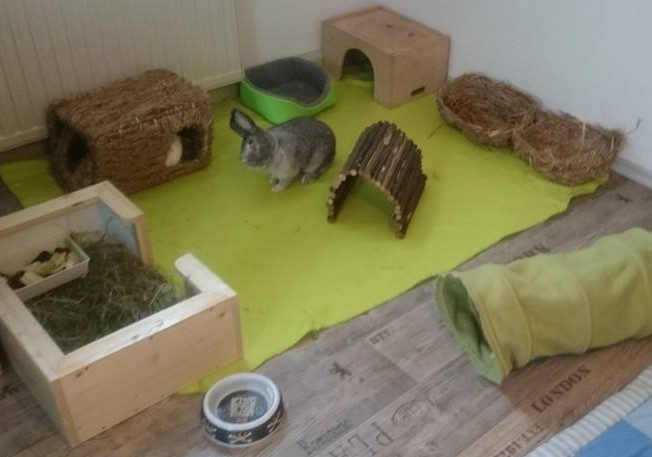
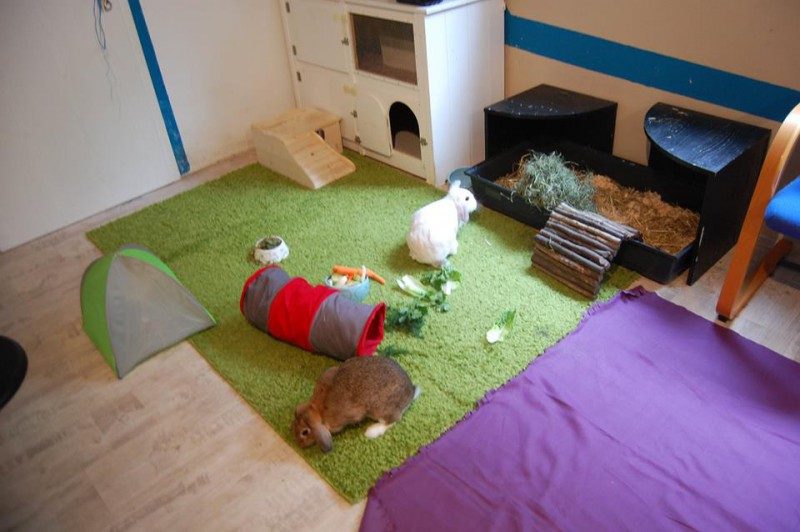
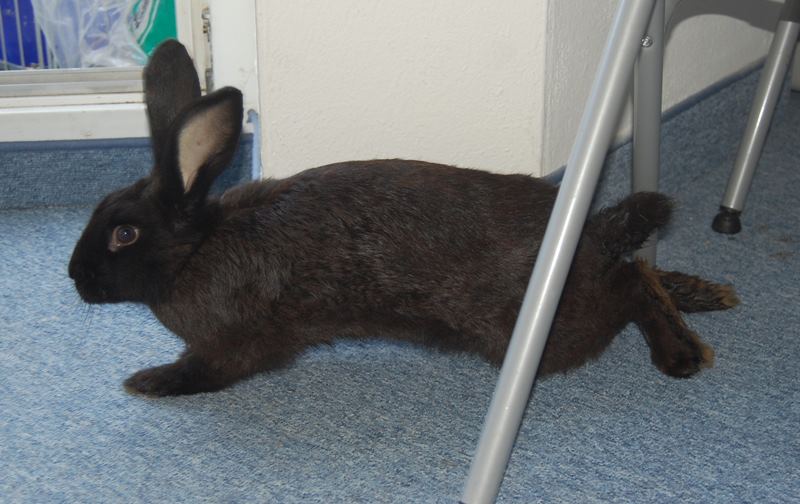

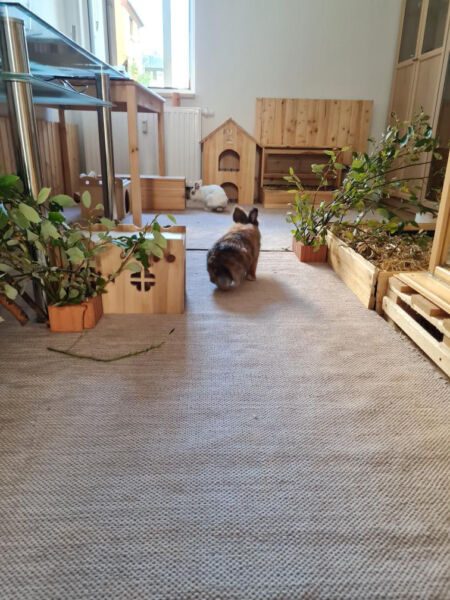
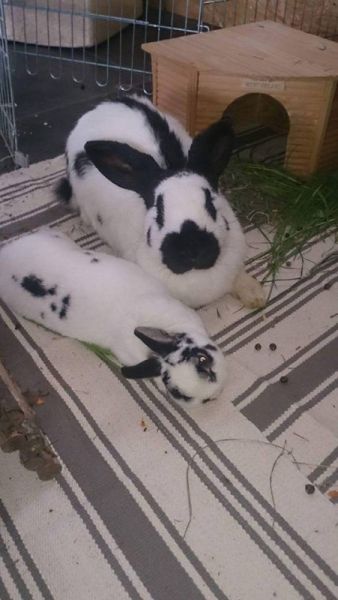
The Right Flooring for Paralyzed or Bedridden Rabbits

Important: A particularly difficult situation arises when rabbits can no longer move and remain lying in the same spot. This condition must never become permanent. Sadly, some people still allow their animals to “survive” like this for far too long.
When a rabbit can no longer move on its own, its quality of life is severely diminished. It’s crucial to determine exactly which illness is causing the condition. If it cannot be treated, the most compassionate decision is to help the animal pass peacefully. As hard as this may be for the caregiver, it would not be fair to keep an animal alive that can no longer live in a way consistent with its species.
If the illness is treatable, the situation demands a great deal of effort, time, and care from the owner. Anyone unable or unwilling to take on that responsibility should also choose to let the animal go — otherwise, it will suffer from sores, poor hygiene, and an overall decline in well-being.
Soft Base Layer
Since these animals spend long periods lying in the same position, they can develop pressure sores if the ground is too hard. To prevent this, it’s essential to provide a soft, well-padded surface. Suitable options include:
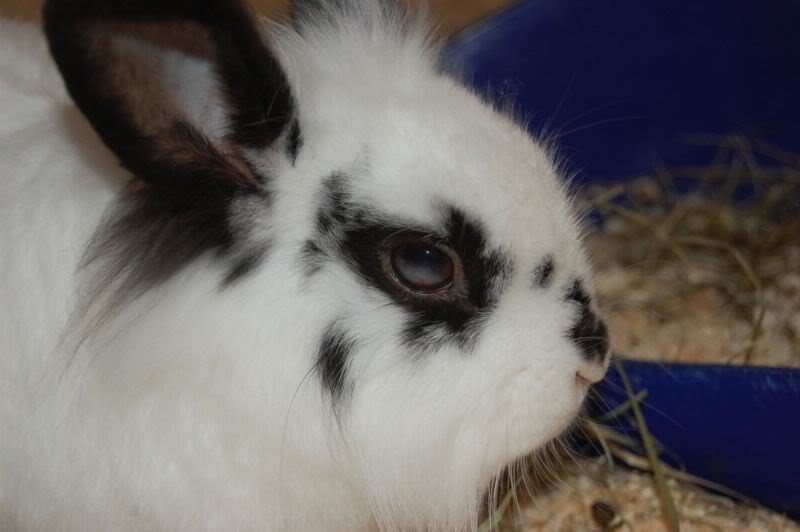
- Dog beds: Washable, waterproof, and generally soft (depending on the model), making them an excellent base. Synthetic leather beds with low edges are particularly suitable.
- Thick carpets: Also usable, though they are harder to clean and often need to be replaced afterward.
- Vetbeds: These allow urine to drain through easily, keeping the surface drier.
- Thick layer of hay, straw, or wood shavings: These materials can also create a comfortable floor covering.
- Thin exercise mat: A good alternative to soften the floor.
- Natural grass: The ideal surface if available (watch out for fly larvae—using protective netting is recommended).
- Old fabrics, mattresses, or cushions: Usable as long as they’re placed over a waterproof urine barrier, such as absorbent pads or incontinence protectors.
Absorbent Underlayer
A highly absorbent base is essential, as immobile rabbits urinate and defecate where they lie, causing waste to accumulate in one spot. The most suitable materials include:
- Incontinence pads: Available at pharmacies, supermarkets, online retailers like Amazon, and veterinary clinics. They are disposable but create a significant amount of waste. To prevent slipping, place them on top of a non-slip mat. Puppy training pads can also be used.
- Wood pellets or shavings: Effective as long as they’re covered with a soft top layer for comfort.
Waterproof or Urine-Repellent Top Layer
The top layer is especially important when a rabbit stays in the same spot most of the time. It must keep the animal dry, allow proper drainage of urine, provide traction to prevent slipping, and help avoid sores or skin irritation. On surfaces that offer good grip, even paralyzed rabbits can move a little on their own. This is key to reducing the risk of ulcers, preventing pressure wounds, and often eliminating the need for physiotherapy. Based on experience, natural grass provides the best results.
Recommended materials:
- Vetbeds: Repel urine and let liquid drain through, keeping the surface dry and the rabbit comfortable. They’re washable and easy to reuse.
- Thick carpets: Also effective since they provide traction and allow some drainage, keeping the surface relatively dry depending on the material. However, they’re difficult to wash and usually need to be discarded afterward.
- Natural grass: The ideal surface. Even nearly paralyzed rabbits can move a bit on it because it offers good grip, drains urine quickly, and prevents moisture-related sores. For outdoor areas, the space should be roofed and protected with fly-proof mesh.
- Hay: A valid alternative to grass or vetbeds, as long as it’s laid down in a thick, stable layer. It should be soft hay. Not recommended for rabbits that spin in circles, as they may injure their eyes.
Barrier-Free Access
Ramps, stairs, or raised platforms should be avoided, or built with a very gentle slope. Rabbits with disabilities often struggle to climb or maintain balance, so a fully ground-level enclosure is the safest option to prevent falls and accidents.
If elevated areas are included, they must have safety edges and wide, low-incline ramps for access. Ramps should also feature side rails or barriers to prevent falls.
When ramps are absolutely necessary, they should be as flat as possible and covered with a non-slip surface to make movement easier. Access to resting, feeding, and drinking areas should always be easy to reach, without obstacles or steep transitions.
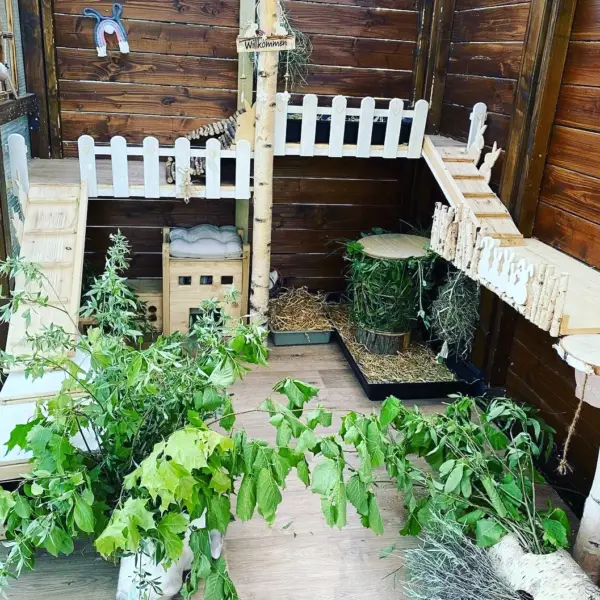
Low and Wide Entrances
Houses or hiding spots should have wide, low openings so the rabbit can enter effortlessly. Elevated or narrow entrances should be avoided, as they can be difficult or even impossible for a disabled rabbit to use.
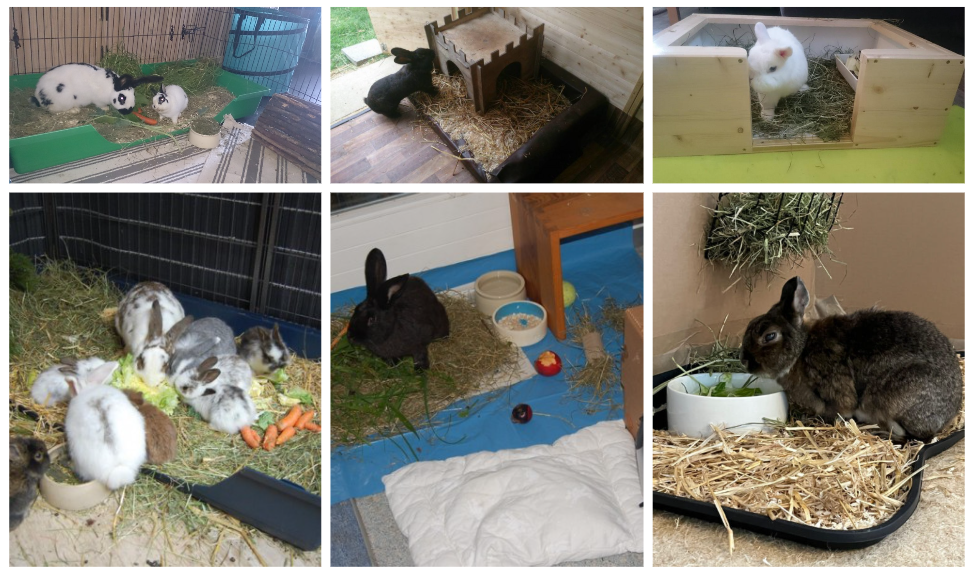
Spacious Environment
The enclosure should be large enough for the rabbit to move freely and comfortably without bumping into obstacles. Narrow corridors and hard-to-reach corners should be avoided to ensure easy, unrestricted movement.
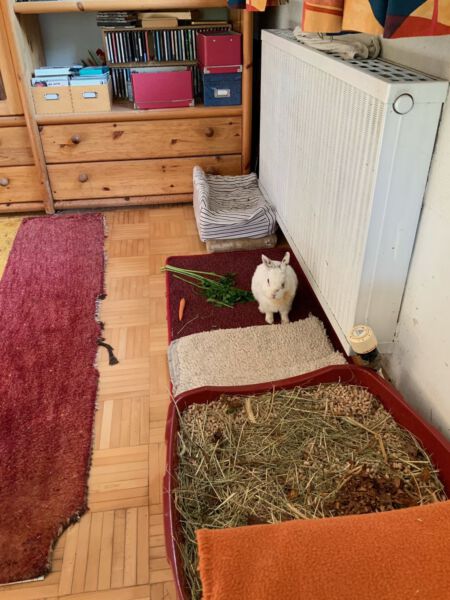
Rabbits in Wheelchairs?
Many cases of paralysis in rabbits are extremely painful, particularly those caused by spinal injuries. It’s often overlooked whether the condition causes pain, and people may rush to use a wheelchair to help the rabbit move. However, it’s important to remember that a rabbit is not a dog or a human. Rabbits move by hopping, and each hop involves spinal movement — meaning that if the spine is damaged, every attempt to move can cause severe pain.
Moreover, rabbits rarely show pain clearly, so they may appear fine while actually suffering. Unlike dogs, which live closely with us and can be placed in or out of a wheelchair for walks and rest, this isn’t practical for rabbits. A rabbit in a wheelchair cannot choose freely when to rest, stay still, or move.
Therefore, this issue must be approached with great caution and critical judgment, since very few people can be with the animal around the clock to put on or remove the wheelchair at the right times.
Adapting Resting and Sleeping Areas
Rabbits with disabilities need especially comfortable resting spots, as they often spend long periods lying down to conserve energy. These areas should be soft, warm, and easily accessible, without steps or barriers. Using padded bedding, fleece blankets, or vetbeds helps prevent pressure sores and provides comfort. The space should also be quiet, free from drafts, and located in a safe corner of the enclosure where the rabbit feels secure and undisturbed.
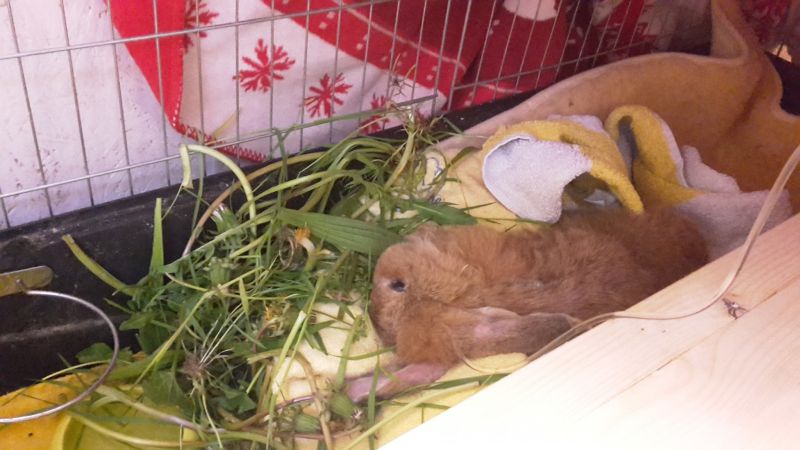
Long resting periods and limited mobility can lead to pressure sores, just as in humans. For this reason, it’s essential to provide a soft surface that helps prevent wounds on the legs and ulcers on the skin.
Tips for Designing Rest Areas
Comfortable Sleeping Spots:
A soft, well-padded floor — such as blankets or special synthetic leather dog mattresses — helps relieve pressure on the rabbit’s joints and muscles. These materials should be cleaned regularly to maintain hygiene and comfort.
Recommendation: a flat synthetic leather dog mattress, a thin exercise mat, or a low-edged bed.
Easy Access:
Resting areas should be easily accessible. Low shelters or tunnels without high edges are ideal for rabbits with disabilities.
Safe Hiding Spaces:
Disabled rabbits also need places where they can hide and feel secure. These should be designed so the animal can enter and exit effortlessly — for example, with wide openings or open sides.
Observe Your Rabbits:
Pay attention to which spots they prefer and which they find difficult to use. Adjust the resting areas according to their behavior and needs to improve their comfort and well-being.
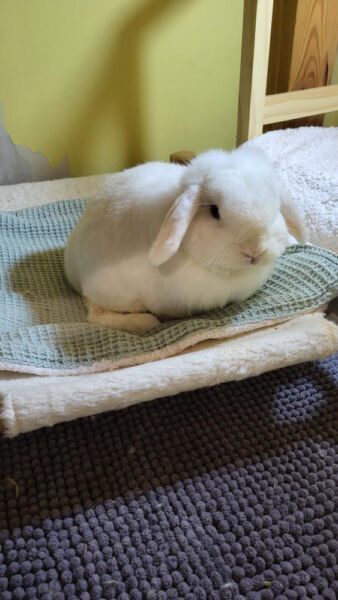
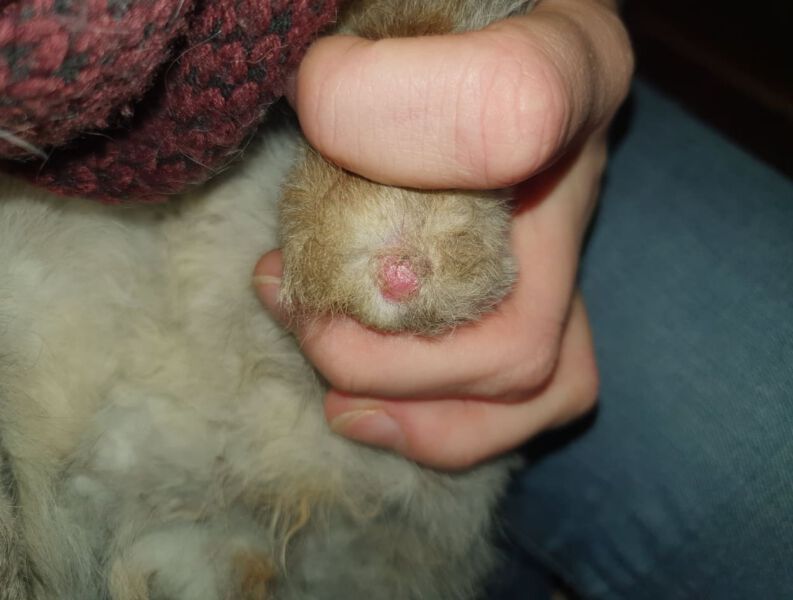
Adapting Feeding and Drinking Areas
Feeding should be easy and stress-free for rabbits with disabilities, allowing them to reach food and water comfortably without effort.
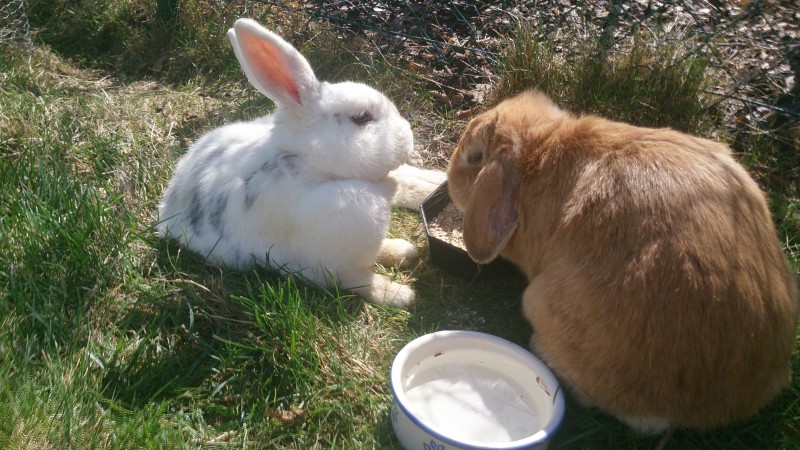
Low Bowls:
Use stable, shallow dishes for food and water so the rabbit can access them easily. Avoid tall or unstable containers, which may be uncomfortable or impossible for them to use. Bird feeders that attach to the enclosure bars can also work well — they’re stable and can be positioned at the perfect height.
All food and water areas should be at ground level, so the rabbit doesn’t need to stretch or jump. This makes access easier, especially for animals with limited mobility.
Easy Access:
Place feeders and water bowls so the rabbit can reach them from different angles. For rabbits with vision problems or paralysis on one side, it’s important to avoid setups that require awkward movements or complicated positioning to eat or drink.
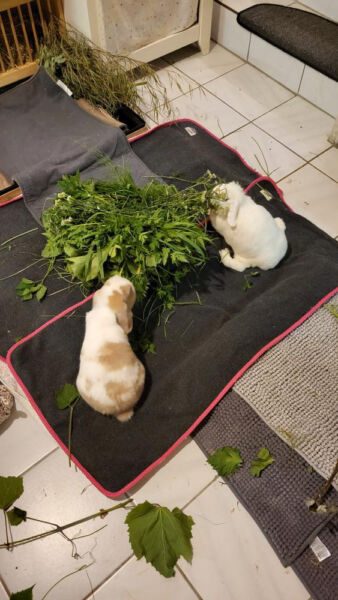
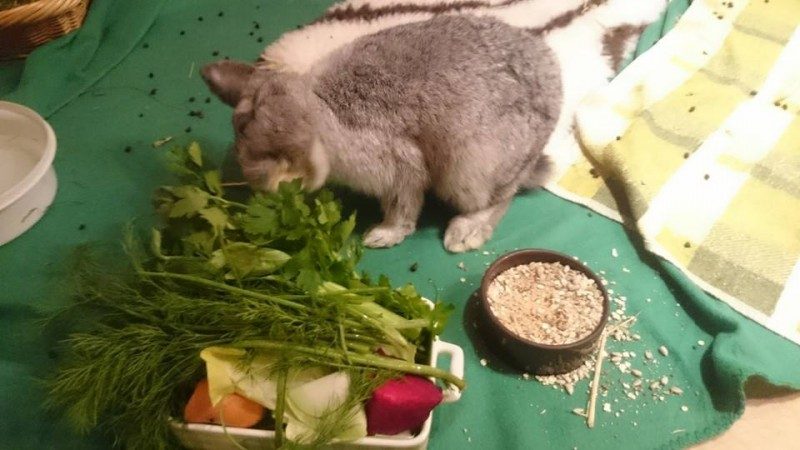
Special Needs of Rabbits with Balance Problems (e.g., Caused by Encephalitozoon cuniculi – EC)
Rabbits suffering from balance disorders due to conditions such as Encephalitozoon cuniculi (EC) — which often causes rolling or tipping over — require a particularly safe and well-adapted environment. Their lack of stability makes it difficult for them to move safely or stay upright, so the proper setup of their enclosure is crucial to prevent injuries and reduce stress.
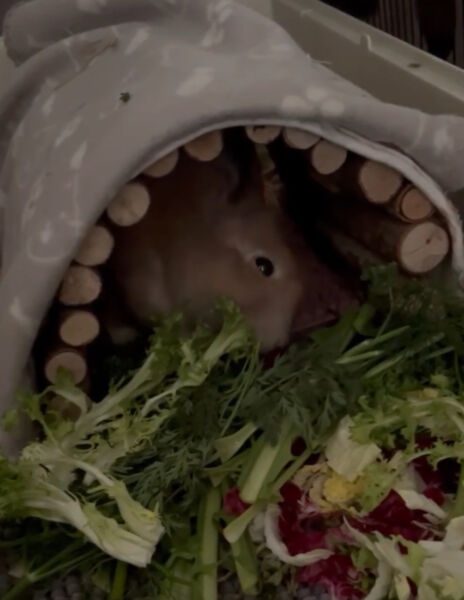
Adapted Feeding
Rabbits with a head tilt or balance issues often struggle to eat from regular bowls. Place food along the edges of the enclosure, scattered on the floor, or in wide, shallow dishes that are easy to reach. This way, the rabbit doesn’t need to stretch or strain to eat, allowing it to feed more comfortably and calmly.
Preventing Eye Injuries from Substrate
For rabbits that frequently fall or roll over, certain substrates can pose a risk, as particles may get into their eyes and cause irritation or injury. In these cases, it’s better to use a softer base such as vetbeds or special synthetic leather dog mattresses. These materials significantly reduce the risk of eye injuries and are much safer for rabbits with balance issues.
Wicker Bridges
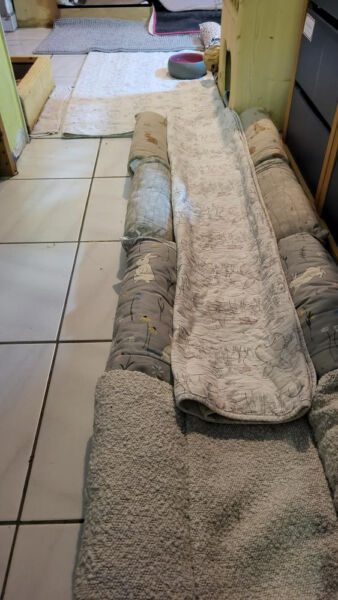
Wicker bridges and similar tunnels are ideal for rabbits with balance disorders. They provide stable shelters that the rabbit can lean against, and their covered, darker design creates a sense of safety and protection. They have no sharp edges and offer the rabbit a secure space to rest and feel calm.
Lateral Support with Rolled Towels
A good way to assist rabbits that frequently fall to one side is to place rolled-up towels or mats around them. You can also use a towel-wrapped bottle to provide additional support without restricting movement. This setup helps prevent injuries and repeated falls. The rabbit can move between the “corridors” created, and if it tips over, it can use the soft supports to push itself upright more easily.
Non-Slip Surface
To help rabbits that fall over regain their footing on their own, they need a stable, grippy surface. Vetbeds are an excellent choice because they don’t slide when the rabbit pushes off with its legs, providing a firm, secure base.
Barrier-Free Access
(See the previous section.)

Special requirements for blind rabbits
Blind rabbits need a carefully arranged environment, since they can’t rely on vision and depend heavily on smell, hearing, and touch. A clear and stable setup in their enclosure is essential so they can move around safely and without stress.
Consistent layout: Don’t reorganize the enclosure often. Blind rabbits need a fixed arrangement of objects to orient themselves. Once they know the space well, they can navigate it confidently even without sight.
Scent markers: Blind rabbits use their sense of smell to locate food areas, resting spots, and shelters. Adding familiar scents to certain objects can make orientation easier.

Tactile guidance: Flat rugs or slightly raised edges can function as tactile pathways. These “touch corridors” help the rabbit find important areas like feeding spots and resting places.
Avoid hazards: Make sure there are no sharp edges, open steps, or other potential dangers. Anything they could bump into should be eliminated. Edges can be padded if the rabbit tends to run into them.
These adjustments allow blind rabbits to move safely and calmly in their enclosure and help them maintain an active, fulfilling life.
Housing adaptations for rabbits with an amputated limb
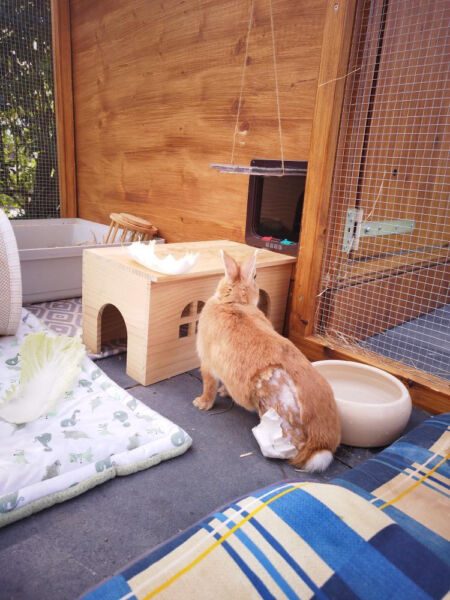
In some rabbits, even after recovery, the enclosure needs adjustments to prevent high jumps (which strain the joints and promote arthritis), paw injuries, and falls:
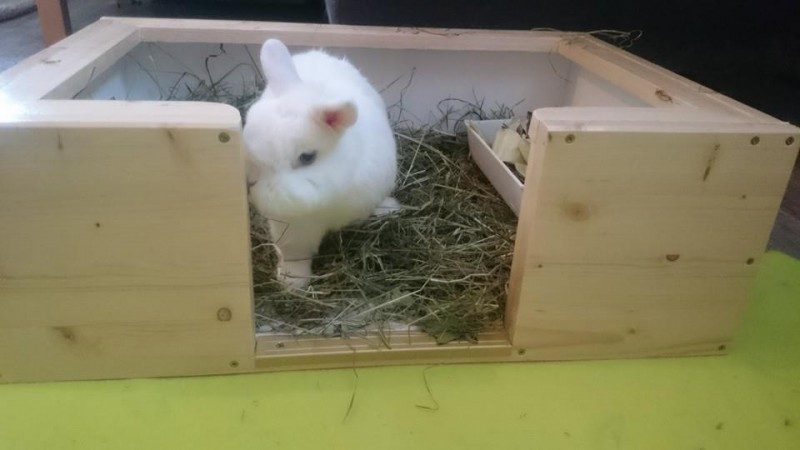
- Secure all levels or platforms with walls and ramps so the rabbit doesn’t have to jump from a significant height.
- Modify the flooring if needed to prevent pododermatitis in the limbs that carry extra weight. A good setup is hay on top of a thick layer of bedding, or dog mats, etc.
- Some rabbits absolutely need non-slip flooring (rugs, bedding, grass, and similar surfaces).
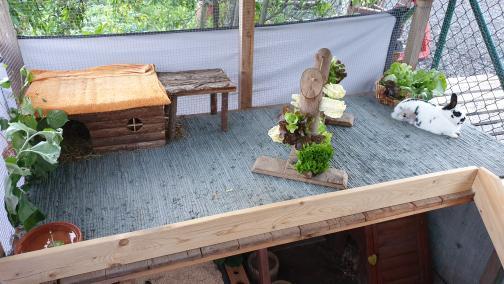
Entertainment and encouraging the rabbit to move more
Even if rabbits have mobility limitations, they still need activity and stimulation. Adapted activities and toys can help them stay active and mentally engaged.
Adapted toys: Use toys the rabbit can handle even while lying down or with limited mobility, such as lightweight balls, food-dispensing balls, or sniffing mats.
Gentle movement stimulation: Add elements that invite the rabbit to move with minimal effort, like low tunnels or boxes it can pass through comfortably. This encourages movement without overexertion.
Varied environment: Rearrange the enclosure or rotate toys from time to time to offer new stimuli and prevent boredom.

Safety and risk prevention
A safe enclosure is essential for rabbits with disabilities, since their limitations increase the risk of injuries or dangerous situations.
Safe materials: Use only non-toxic, rabbit-safe materials. Make sure there are no sharp edges or cutting hazards in the enclosure. Keep in mind that rugs must not be chewed or ingested, as this can cause life-threatening intestinal blockages.
Stable elements: All items in the enclosure—houses, tunnels, food bowls—must be firmly positioned so they won’t shift if the rabbit leans on them.
Risk reduction: Remove obstacles the rabbit could trip over and secure any area where it could get stuck.
Properly setting up an enclosure for rabbits with disabilities requires extra attention and specific adaptations to meet their needs. With a well-planned, barrier-free space, comfortable resting areas, and easily accessible feeding points, you can ensure that even a rabbit with physical limitations can live a full and largely independent life. Always pay close attention to your rabbit’s individual needs and adjust the enclosure when necessary to maintain the best possible quality of life.



